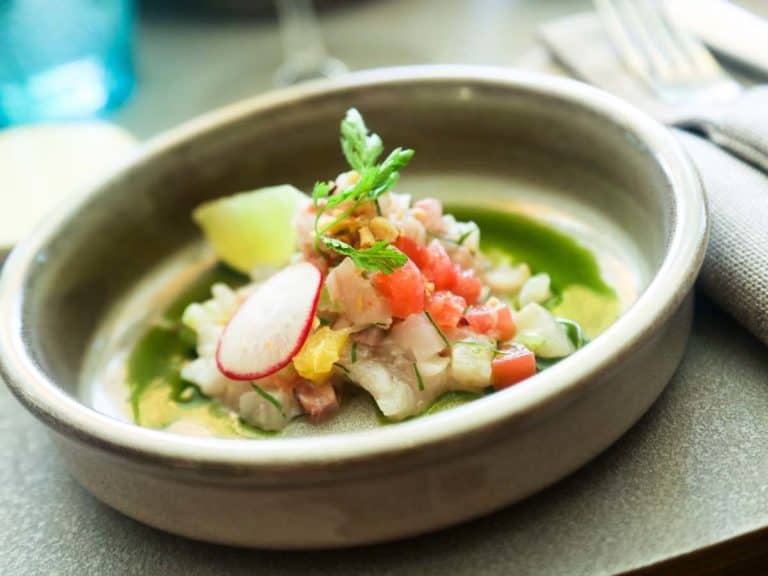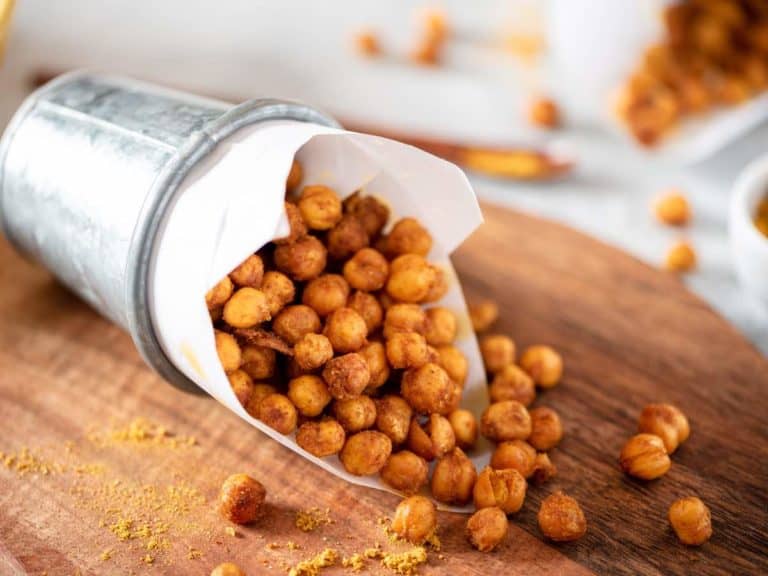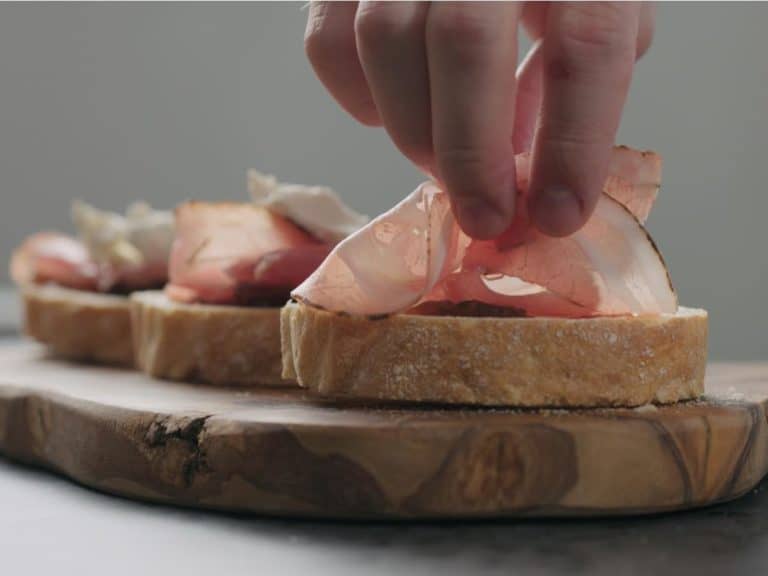Factors That Affect How Long Does Espresso Last After Brewing
How do you enjoy your espresso? Do you linger over it, preferably over a good book as I do, or do you try to finish it in minutes for the best flavor? How long do you have to drink hot espresso before it dies?
The right answer for you partly depends on your taste buds, and partly on the changes that happen to coffee over time and with heat. Hot espresso and any hot coffee for that matter, changes in flavor as its esters and essential oils evaporate and its chemical composition is altered by heat and oxidation.
The more sensitive your taste buds, the better you can detect these changes, which means you should consider the optimal time for consuming your coffee while its flavor and aroma are at their best. Espresso loses most of its flavor within 30 minutes of pulling, but peak flavor is lost in less than ten minutes.
Join me as I go over the various factors to consider in deciding how quickly to finish your espresso shots and what you can do to make them last longer.
What Happens to Espresso After Brewing?
Let’s go into the details of how espresso changes after brewing.
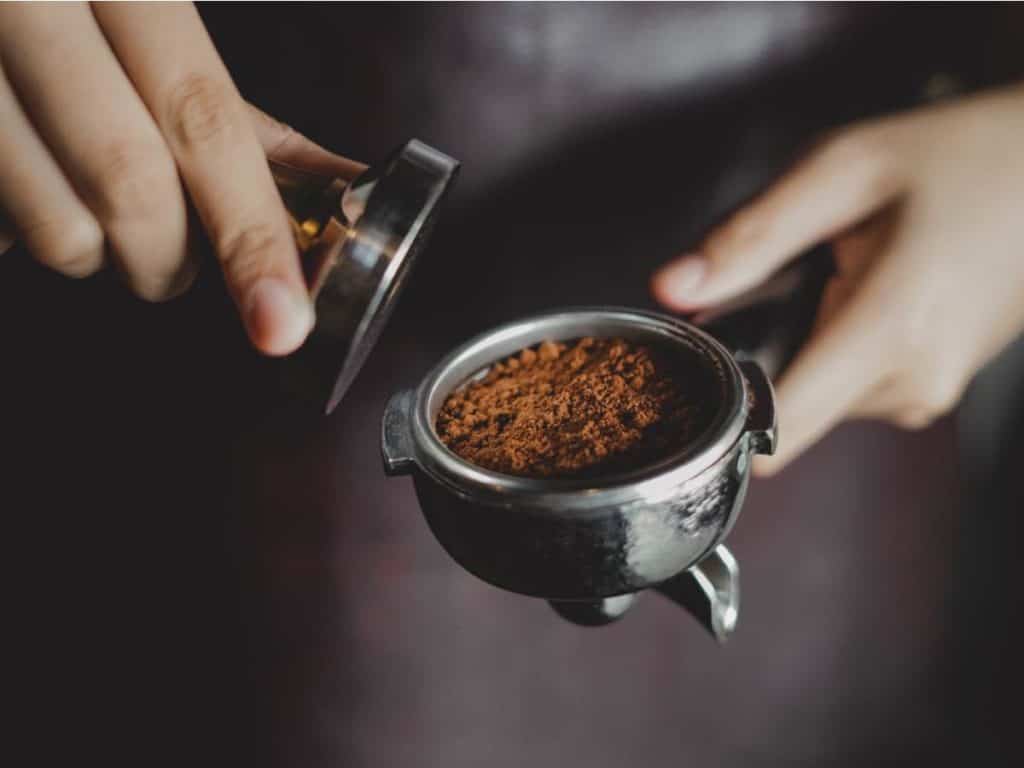
Espresso is made by forcing hot water under pressure through a tightly packed bed of coffee. This high-heat, high-pressure extraction method makes a cup with a big, bold flavor and bewitching aroma, but it also makes for a more volatile coffee whose properties change quickly over time.
The volatility of espresso’s flavor is further increased by its small serving size. The lesser the volume, the faster a liquid evaporates and cools. This pairs well with Italian coffee culture, which is to have small servings of coffee several times a day, and consume each serving quickly – a shot of espresso should only be good for three sips.
Let’s look at the stages of how espresso can change and when it’s best to consume.
Stage 1: Too Hot
A freshly-pulled shot of espresso looks and smells glorious, with its foamy head of crema and rich aroma. If you sip it immediately, though, you won’t get much flavor. It’s not the coffee, though, it’s you.
Your taste buds are programmed to detect flavor best in food and drink that’s closer to body temperature. Too hot or too cold, and much of the flavor will go undetected.
That’s why ice cream manufacturers have to put so much sugar in ice cream, and why melted ice cream can taste way too sweet. And in barista competitions, competitors know to cool their brews before passing them to the judges for tasting.
So do your tongue a favor – avoid scalding it, and give it a better coffee experience, by waiting a couple of minutes before tasting your fresh cup of espresso.
Stage 2: Peak Perceptible Flavor
As espresso cools, its composition changes.
The oils and esters in the coffee evaporate with the steam, releasing its aroma but also decreasing it over time. Some of the chlorogenic acids in the coffee are broken down by heat into caffeic and quinic acids, which have a more bitter and astringent flavor.
Simultaneously, other chemical components of the coffee are oxidizing. The crema froth will begin to dissipate as its bubbles break, further weakening flavor. In other words, as time passes your cup of espresso will degrade in flavor – starting from the very moment you pull the shot. However, you do have quite a bit of time before this chemical breakdown becomes too noticeable.
At the same time, as the coffee cools your taste buds will be more able to differentiate its complex of flavors. Remember that earlier you couldn’t have detected these flavors because the coffee was still too hot.
At a certain point, temperature and chemical breakdown will be in perfect balance with each other and your espresso will be at its peak perceptible flavor. The coffee is no longer too hot to taste, yet still fresh enough that most of its flavor is still there. At sea level in an airconditioned room, expect peak perceptible flavor in two to five minutes after brewing.
The colder the room or the higher you are in altitude, the faster this peak will occur and drop off.
Stage 3: Crema Dissipates
Crema, which Italians consider the ultimate expression of a good espresso, is formed by steam and air bubbles combining with the soluble oils in the coffee and is the most volatile part of an espresso shot.
With their great surface area relative to volume, the tiny bubbles distribute flavor wonderfully, but this also makes them quick to dissipate. As crema dissipates, so does the flavor of the espresso.
Crema on good espresso will be fully dissipated within ten minutes after pulling the shot. At high altitude, or with too much stirring, or inferior beans, crema dissipates faster. If the crema disappears in less than one minute, the extraction was done too fast or the beans roasted too light.
Because crema is so essential to the experience of drinking espresso, some coffee enthusiasts prefer to finish their shots before the crema dies. This means that for the best flavor, your window to finish your espresso is between 2 to 10 minutes after brewing, from the point where it’s cool enough to taste until the crema disappears.
If your taste buds are less sensitive, though, you may not detect too much change in flavor until after 20-30 minutes.
Stage 4: Increasing Acidity and Bitterness
Remember what we said about chlorogenic acid breaking down into caffeic and quinic acids?
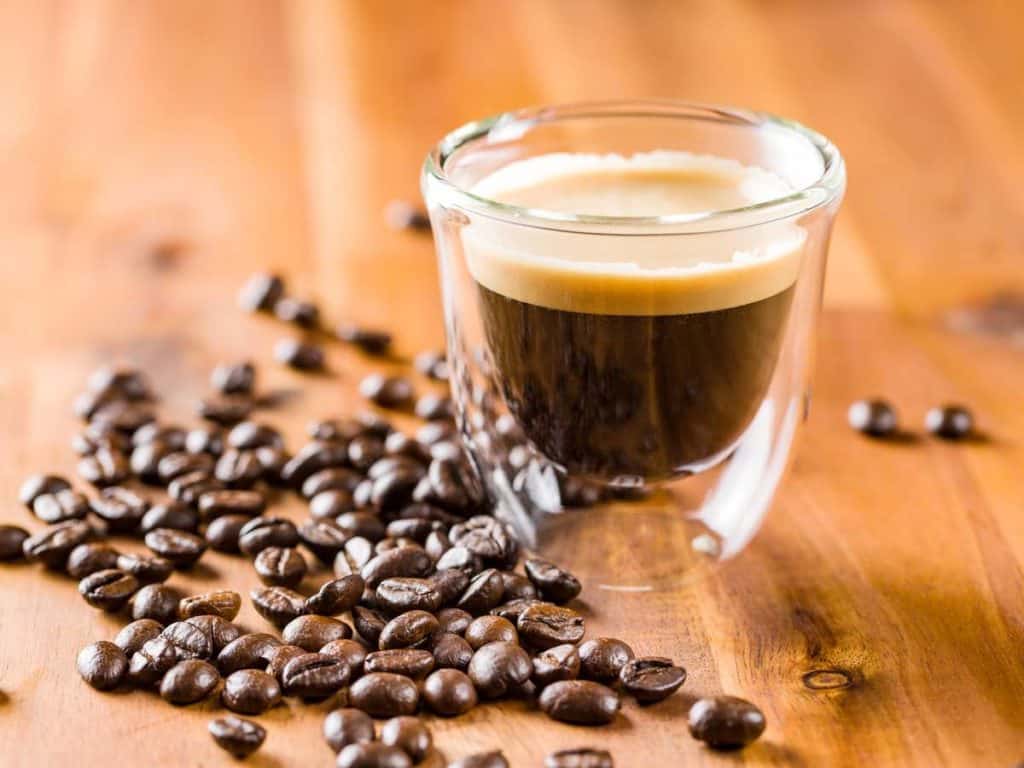
These and oxidation are responsible for making coffee taste increasingly acidic and bitter as time passes. These changes will grow more pronounced 10 to 30 minutes after brewing and continue as long as your coffee stays out.
Reheating your espresso, if there’s still enough in your cup to justify it, is not a remedy. It will only make the problem worse, as applying heat again will only accelerate the chemical breakdown.
Cooling or diluting your espresso however will drastically reduce the pace of these changes. This is why cold coffee drinks made with espresso shots last much longer than hot espresso served straight.
Stage 5: Expensive Sludge
If you allow your espresso to sit out too long, the chemical changes will reach the point where most of the flavor is gone. You’ll be left with a joyless, overly bitter cup of muddy coffee. How long this takes depends on coffee quality, ambient temperature and altitude, and your own taste buds.
We’re all different, sometimes to surprising degrees. Some can detect radical flavor changes in their espresso within just minutes, some can nurse a cup for 45 minutes or more, and some have such low flavor sensitivity that day-old espresso is still ok for them.
Will flat espresso still wake you up though? Yes. Caffeine is not among the chemicals lost as coffee oxidizes and cools, so a cup of espresso will remain as strong as it was when brewed even hours or days later.
Does Espresso Expire After 10 Seconds?
It takes more than ten seconds for espresso to lose its peak flavor. Even crema can be expected to last up to ten minutes with good coffee.
The ten-second rule came from Starbucks barista practices, which mandate using a shot of espresso within ten seconds after pulling. This practice makes sure baristas use very hot espressos to make hot drinks and to keep the espresso from spillage or accidental contamination from other liquids or food particles.
The practice also keeps baristas tightly focused on the process of making their drinks. These in turn assure the quality of the drinks served.
Is Espresso Without Crema Bad?
In Italian coffee culture, espresso without crema is a blasphemy second only to pineapple on pizza. Crema is proof of an espresso’s quality and the barista’s skill. For some Italian connoisseurs, proper espresso should have a crema so thick that it can support a teaspoon of sugar for a couple of seconds before letting it slide to the bottom.
Lack of crema or crema that disappears too quickly can indicate using beans that are no longer fresh, or using a roast that’s too dark or too light, which betrays a lack of expertise in the barista. It also reflects on the barista’s technique and experience with his machine.
While a thick crema isn’t essential to the enjoyment of espresso, and in fact, most American coffeehouse chains train their baristas to only pull crema to one-tenth of the cup, it’s still a very good indication of the espresso’s quality.
If you’re drinking espresso to enjoy it, you’ll want to see a healthy amount of crema in your cup and finish that cup before the crema disappears.
The Italian concern for proper crema is understandable when you understand that much of an espresso’s flavor and aroma is concentrated in that froth. However, it’s also the bitterest part of the espresso.
No few consumers prefer to remove the crema with their teaspoons before drinking to avoid that bitterness. If you like the taste of good, strong coffee but want it less bitter, consider spooning away the crema too.
Can You Drink Espresso the Day After Brewing?
Black espresso, in fact, any black coffee, can keep for up to twelve hours on the countertop. It won’t be spoiled, but it won’t taste good either. Loss of aromatic volatile compounds and oxidation will turn your coffee flat in just 30 minutes or so. If you keep your espresso in the fridge, it can last three to four days.
Coffee is actually a poor medium for bacterial growth. It can remain technically unspoiled for days without refrigeration in sanitary conditions, though of course losing quality and palatability the whole time.
Once you add milk, soy milk, or coconut milk, however, spoilage happens much faster because these are rich media for bacterial growth.
As a rule, you should finish your espresso within 30 minutes if you want to enjoy it, and not after twelve hours if it’s black. If you added milk or a milk substitute, however, you should consume it within two hours.
How Can You Make Espresso Last Longer?
While hot espresso thanks to its brewing technique and heat are very volatile and prone to losing flavor quickly, there are also many easy ways to extend its life. Most of these techniques revolve around diluting the espresso or chilling it, or a combination of the two. Here are some tricks for making espresso last longer:
- Rinse your cup with hot water before pulling an espresso shot into it. This helps maintain the ideal temperature longer.
- Make an Americano (espresso diluted with hot water).
- Make a macchiato, latte, or cappuccino (espresso diluted with milk).
- Make iced coffee (pour or brew espresso over ice).
- Cool the espresso and refrigerate for later use. You’ll lose some flavor, but it will still be good and keep for 3-4 days.
- Make espresso ice cubes. These can be used later to make cold coffee drinks or mixed in coffee-based cocktails. Try them in Bailey’s liqueur!
- Made too much espresso to drink all by yourself? Try making espresso steak marinade or espresso barbecue sauce! You’ll be surprised how well coffee pairs with the flavors of beef or pork.
- Make espresso banana ice cream! This recipe lets you make vegan ice cream with just three ingredients – bananas, cocoa powder, and coffee powder or cooled espresso. Healthy, low-fat, and with its caffeine jolt perfect for revitalizing an e-learning-fried brain!
What to Do With Expired Coffee and Used Coffee Grounds
Do you make a lot of espresso throughout the day? If you do, you’ve probably wondered what to do with the occasional batch that goes stale on you, or what to do with all the coffee grounds left after brewing.
Coffee grounds are a major component of household and food industry waste, in the United Kingdom alone totaling some 500,000 tons per year. Simply thrown into the garbage can, waste coffee grounds go into landfills where they add methane to the atmosphere and acidify the surrounding soil, which harms nearby plants and trees.
The good news however is there’s a lot of uses for leftover coffee and coffee grounds, ranging from your kitchen to your garden to your own skin.
Here are some ideas that will save you money and let you do a good turn for the environment as well:
Make Art With Expired Coffee
Did you know you can make beautiful watercolors with coffee?
Leftover espresso is just the right concentration to make a watercolor wash with a rich and elegant sepia tone. You can have fun learning watercolor painting without having to buy watercolor paints.
Simply use leftover espresso as your paint for dark to medium browns, and add water to make lighter shades. For even darker tints, you can boil down your leftover espresso to greater concentration.
To make coffee paintings, you’ll need leftover espresso, watercolor paper, and a selection of brushes. Because coffee colors like an ink wash, you can also buy Japanese brushes and experiment with a sumi-e style using coffee.
Use Coffee Grounds as Exfoliant
You can employ used coffee grounds as a skin exfoliant, which can save you money on additional toiletries and smells great too. Simply combine the coffee grounds with an oil such as virgin coconut oil, baby oil, or cocoa butter and rub it onto your skin. It works great on dry, cracked heels!
Use Coffee Grounds as Garbage Deodorizer
Adding coffee grounds to your food wastes such as fruit and vegetable peelings will keep down unpleasant odors. Strong coffee such as used in espresso is even better for this purpose because of its stronger aroma.
Use Coffee Grounds for Scouring
Coffee grounds are a pretty and food-safe abrasive. You can use them to clean stubborn gunk off your pots and pans. Just scour using coffee grounds and a washcloth, then rinse and wash again with soap and water. But don’t do this with your nonstick pans!
Use Coffee Grounds as Garden Fertilizer
House and garden plants like their joe too! You can place used coffee grounds straight into your flowerpots or garden in modest quantities per plant. As a side benefit, coffee grounds repel snails and slugs. If you have these in your garden, place your coffee grounds in a ring around the plants.
To get even more benefit from the grounds, add them to a compost heap and let the good bacteria break them down into nutrients before distributing them around your garden.
Use Coffee Grounds as Pest Repellent
Coffee grounds can repel not only slugs and snails, they’re also good against cats, dogs, and mosquitoes.
To keep cats and dogs from digging or pooping in your garden, mix used coffee grounds with orange peels and sprinkle the mixture to make a barrier around your garden or specific areas you want to protect. This will repel most cats and dogs, though individual dogs may have higher tolerances for coffee and orange odors than most.
To deter mosquitoes, you can burn quantities of used coffee grounds like incense.
Dry the used coffee grounds thoroughly but without using heat so the aroma remains longer. Once dry, you can burn these in bowls, or make candles with them. For a stronger effect, you can add some unused coffee grounds.
Grow Your Own Mushrooms in Coffee Grounds
Did you know that less than 1% of your coffee bean actually finds its way into your cup? That’s right, as powerful as a shot of espresso is, a full 99% of its biomass remains solid and goes into your garbage.
Unless you save it.
One of the best and most profitable ways to do so is to grow your own mushrooms in the used grounds. Mushrooms are fantastic natural recyclers, and mushrooms, especially oyster mushrooms, recycle coffee very well and thrive on it.
Make the cycle complete by enjoying your homegrown mushrooms with an espresso-marinated steak!
